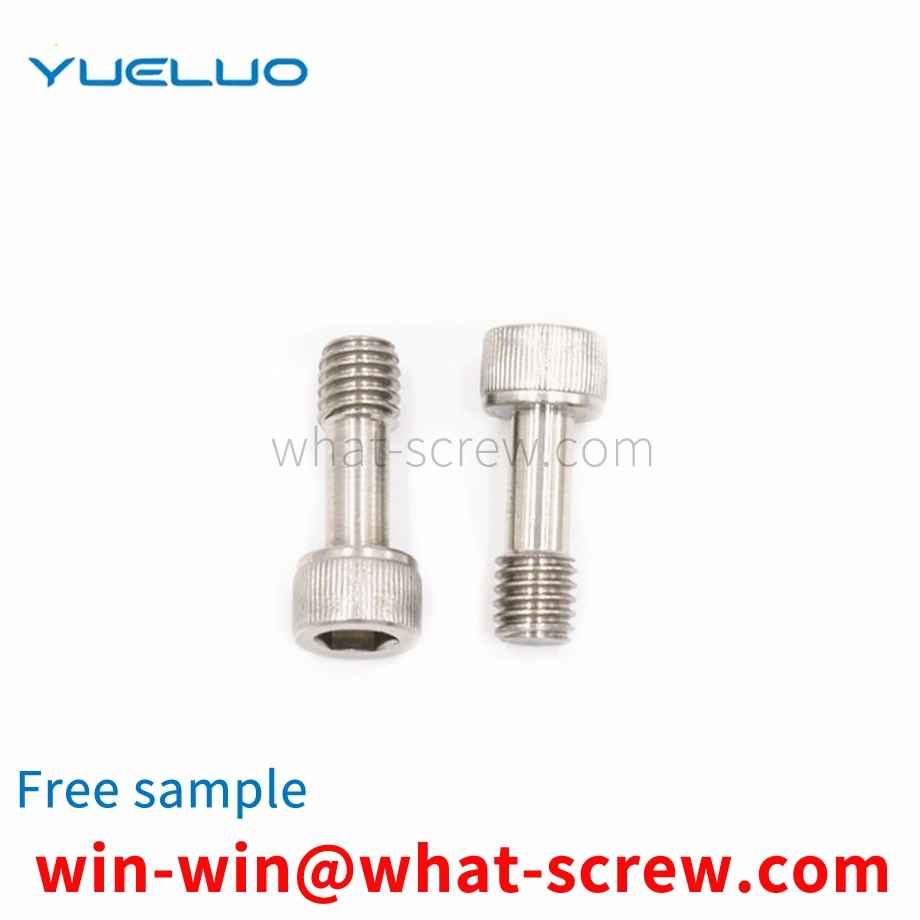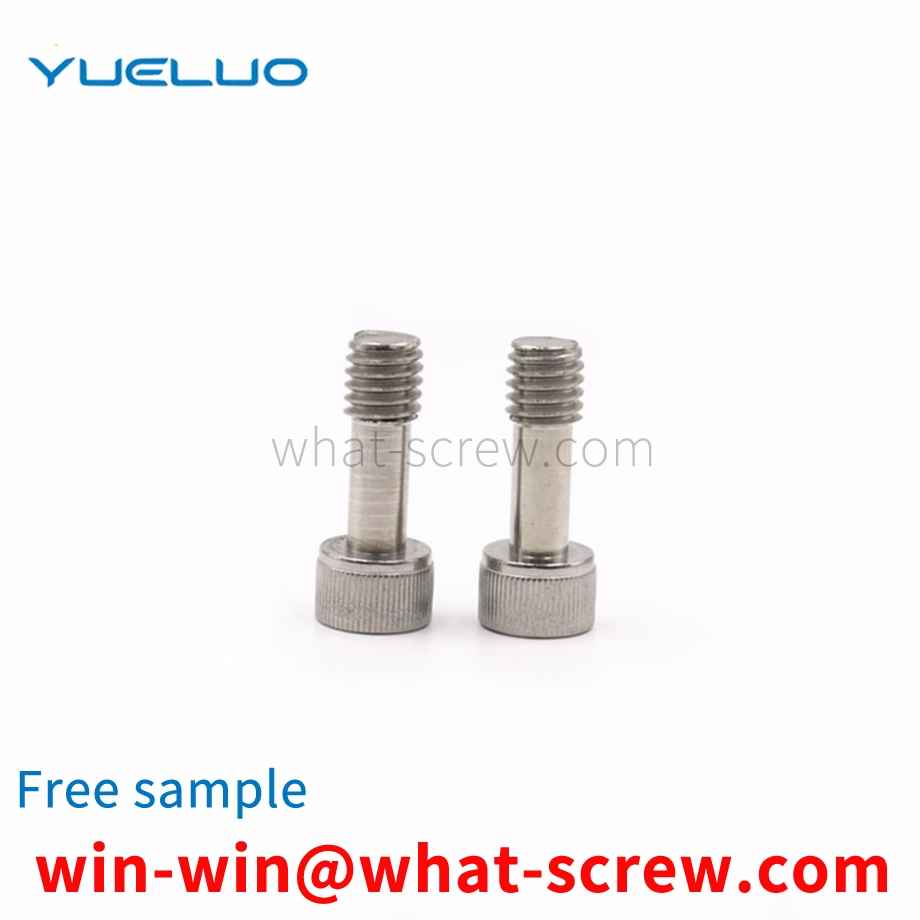At present, the washing machines used in the domestic market, especially the large-capacity washing machines, have high rotational inertia due to their large washing capacity. The wear between the input shaft and the clutch sleeve will cause the increase of the axial clearance. There will be strong shaking and loud noise, which will increase the wear and tear and affect the service life. In the prior art, the wave washer is used to prevent loosening and buffer shock, so that the gap between the input shaft and the clutch sleeve will not increase due to the wear of the two, which plays the role of automatic gap compensation, so as to ensure the clutch Smooth rotation, low noise and light wear ensure the reliable service life of the clutch.
T-slot bolts refer to the bolts installed in the T-slot. The installation process of T-slot bolts is usually as follows. When the T-slot (generally refers to the T-slot aluminum alloy profile) is set horizontally, the bolt The bolt head is placed in the T-slot in the horizontal direction, the bolt shaft is facing outward, and then the bolt is rotated 90 degrees axially, the bolt head becomes vertical and will not come out of the T-slot, and then install the mounting hole of the object Align the bolt rod and insert it and screw the nut on the bolt rod. During the tightening process of the nut, if the thread gap is small or the thread is damaged or there is dirt, the bolt will often rotate, and the rotation angle of the bolt is uncontrollable and impossible. Observe that when the rotation angle of the bolt is in the range of about 90 degrees, the bolt is in a state of being released from the T-shaped groove at any time. Even if the nut is tightened, the installation of the installation object is invalid and unreliable, and there is a serious safety hazard. , the actual situation is that when the rotation angle of the bolt exceeds 20-30 degrees, the installation of the installation object is already unreliable.
The quality of electroplating is measured primarily by its corrosion resistance, followed by appearance. Corrosion resistance is to imitate the working environment of the product, set it as the test condition, and perform a corrosion test on it. The quality of electroplating products shall be controlled from the following aspects: 1. Appearance: Partial uncoated, scorched, rough, gray, peeling, crusted, and obvious stripes are not allowed on the surface of the product, and pinholes, pitting, and black plating are not allowed. Slag, loose passivation film, cracks, peeling off and serious passivation marks. 2. Coating thickness: The operating life of fasteners in corrosive atmosphere is proportional to its coating thickness. The general recommended thickness of economical electroplating coating is 0.00015in ~ 0.0005in (4 ~ 12um). Hot-dip galvanizing: the standard average thickness is 54 um (43 um for diameter ≤ 3/8), and the minimum thickness is 43 um (37 um for diameter ≤ 3/8). 3. Coating distribution: With different deposition methods, the aggregation method of the coating on the surface of the fastener is also different. During electroplating, the coating metal is not uniformly deposited on the peripheral edge, and a thicker coating is obtained at the corners. In the threaded portion of the fastener, the thickest coating is located on the thread crest, gradually thinning along the flank of the thread, and the thinnest deposit is at the bottom of the thread, while hot dip galvanizing is just the opposite, the thicker coating is deposited on the inside corners and On the bottom of the thread, mechanical plating tends to deposit the same metal as hot-dip plating, but is smoother and has a much more uniform thickness over the entire surface [3]. 4. Hydrogen embrittlement: During the processing and processing of fasteners, especially in the pickling and alkali washing before plating and the subsequent electroplating process, the surface absorbs hydrogen atoms, and the deposited metal coating then traps hydrogen. When the fastener is tightened, the hydrogen is transferred towards the most stressed parts, causing the pressure to build up beyond the strength of the base metal and producing microscopic surface cracks. Hydrogen is particularly active and quickly seeps into the newly formed fissures. This pressure-rupture-penetration cycle continues until the fastener breaks. Usually occurs within a few hours after the first stress application. To eliminate the threat of hydrogen embrittlement, fasteners are heated and baked as soon as possible after plating to allow hydrogen to seep out of the plating, typically at 375-4000F (176-190C) for 3-24 hours. Since mechanical galvanizing is non-electrolyte, this virtually eliminates the threat of hydrogen embrittlement, which exists in galvanizing using electrochemical methods. In addition, due to engineering standards, it is forbidden to hot-dip galvanize fasteners with hardness higher than HRC35 (Imperial Gr8, metric 10.9 and above). Therefore, hydrogen embrittlement rarely occurs in hot-dip plated fasteners. 5. Adhesion: Cut or pry off with a solid tip and considerable pressure. If, in front of the blade tip, the coating peels off in flakes or skins, exposing the base metal, the adhesion shall be considered insufficient.
T-bolt, the European standard is called hammer bolt, the material is carbon steel, the surface is galvanized or nickel-plated, the T-bolt can be directly put into the groove of the aluminum profile, and it can be automatically positioned and locked during the installation process. Used in conjunction with the blue nut, it is a standard matching connector when installing corner fittings. It can be selected and used according to the profile groove width and different series of profiles. When the T-bolts on the market are installed with the installation channel, the bolts need to be placed into the channel from the port of the channel, and then tightened when moving to the designated position. The bolts are easy to rotate during installation, and the connection is not tight. Therefore, it is necessary to propose a mounting structure that uses T-bolts and grooves.
A screw suitable for a variety of tools is a single-structure threaded part, including a screw body and a screw head. The outer surface of the screw body is processed with an external thread 1, and the outer side of the screw head is formed by six screw heads. Prismatic, the top surface of each edge of the outer hexagonal prism is a boss, between each boss is an end face groove 4, and the middle of each boss is provided with an end face hole 3; the inner side of the screw head is formed by six screw heads. The side surface 5 forms an inner hexagonal prism hole, and the bottom of the inner hexagonal prism hole is processed with a cross groove 16 .
We have many years of experience in the production and sales of screws, nuts, flat washers, etc. The main products are: combination Phillips pan head screws, high-strength thickened nuts and nuts, GB856, cup head hexagon socket head combination nuts and other products, we can provide you with suitable products Your fastener solution.



















 Service Hotline
Service Hotline




